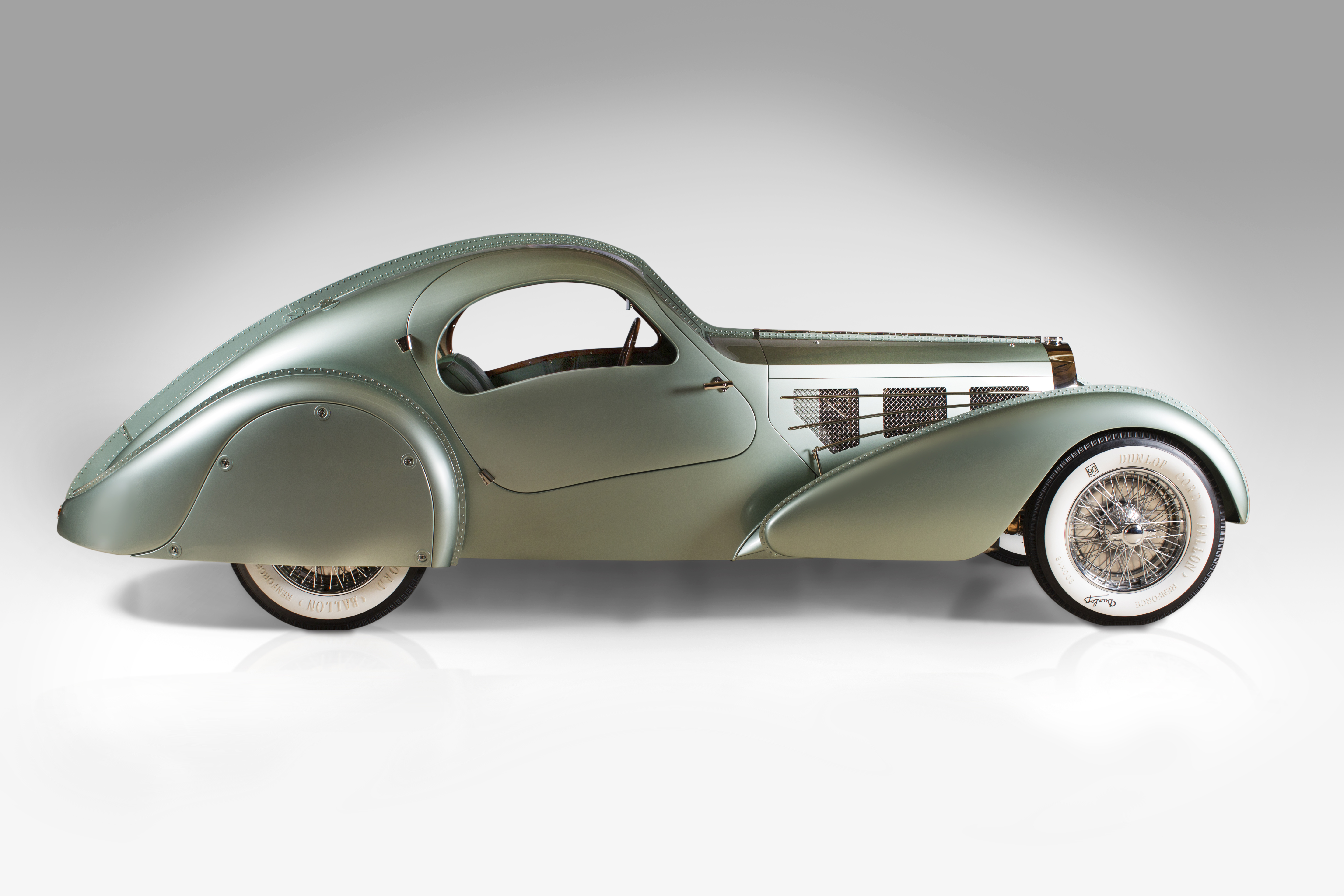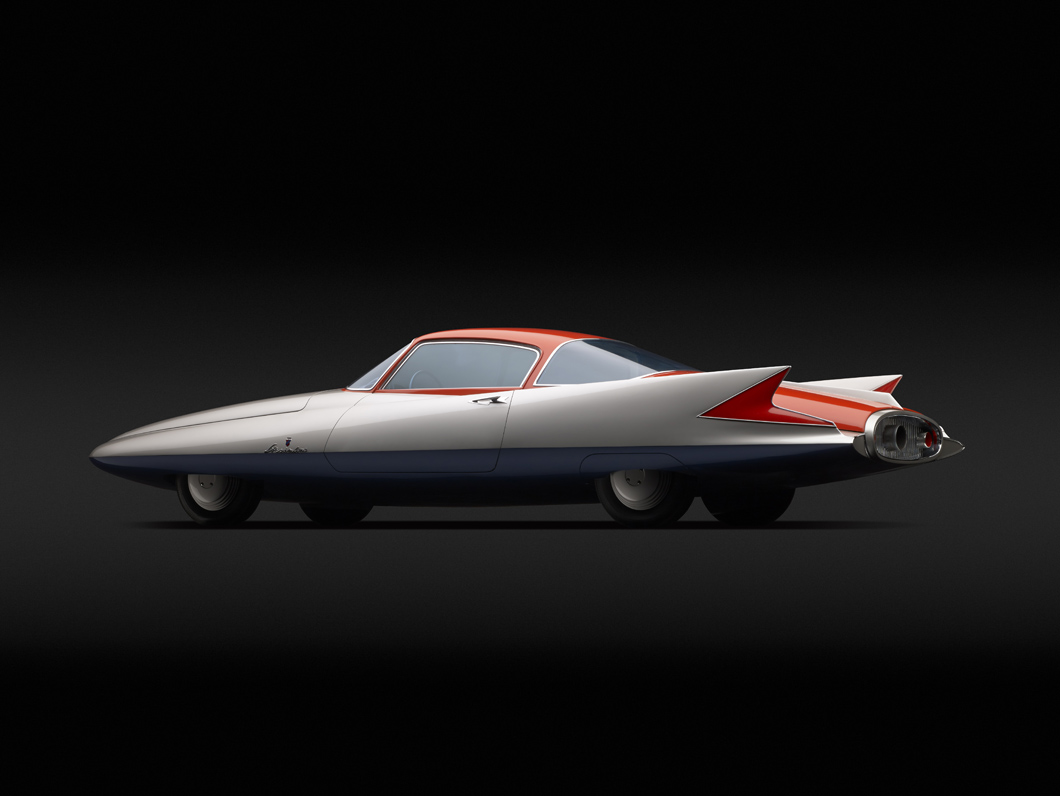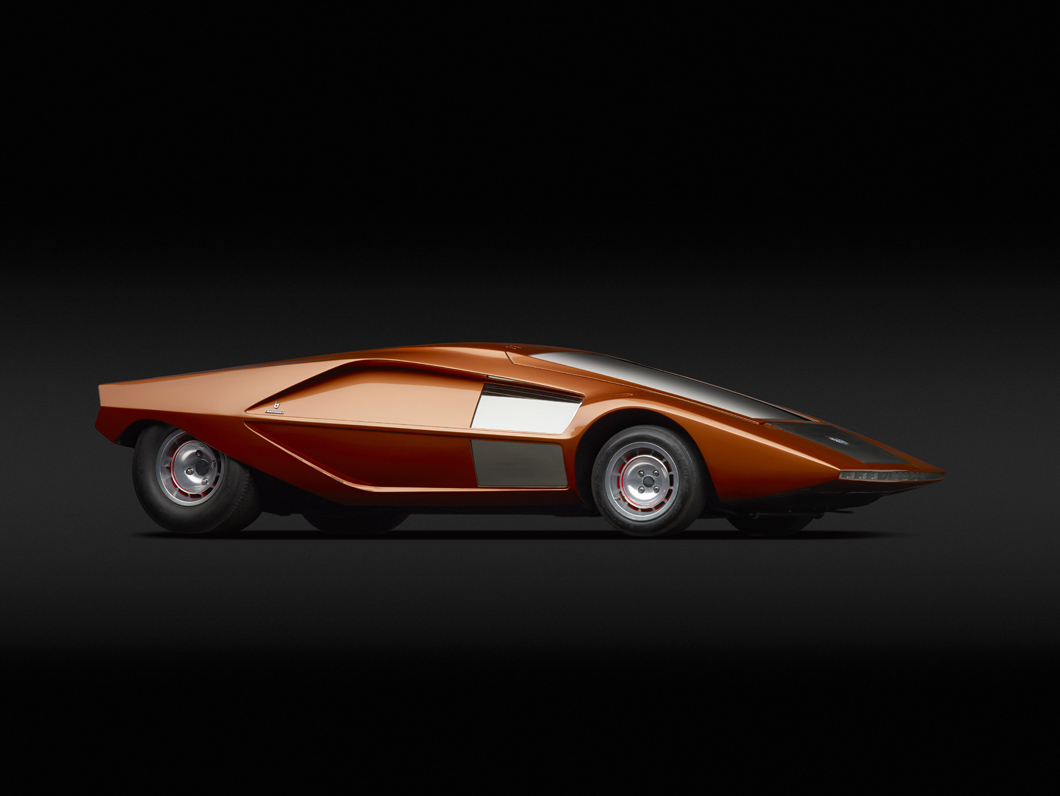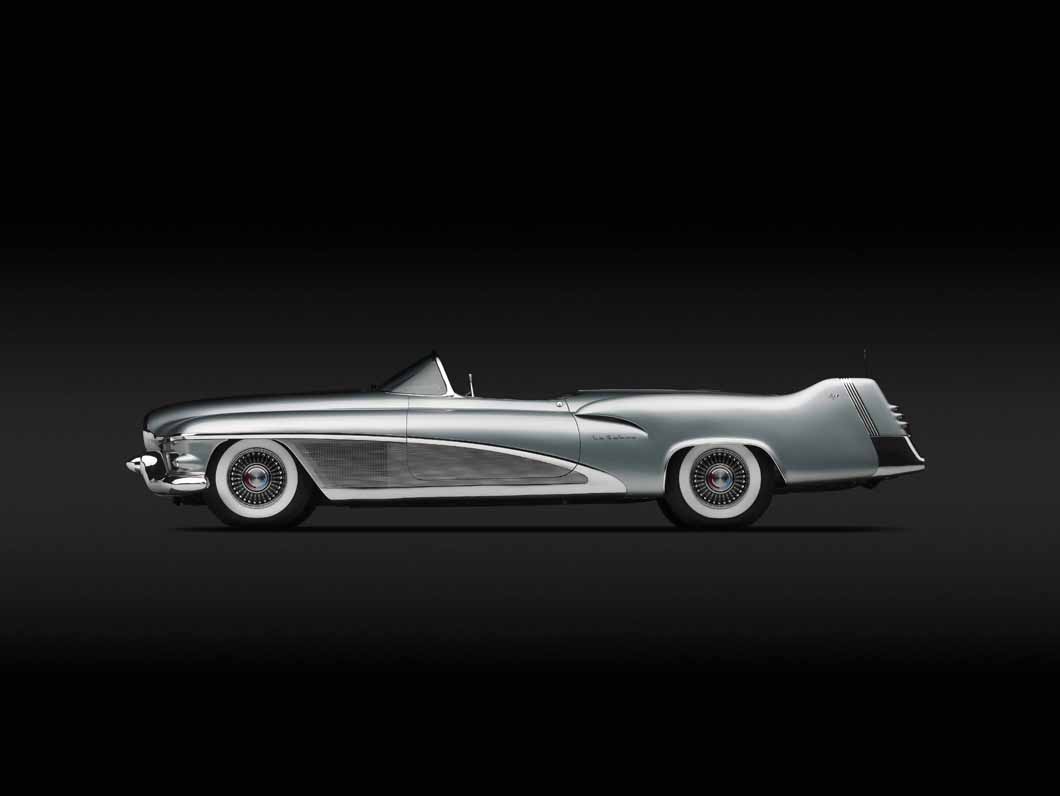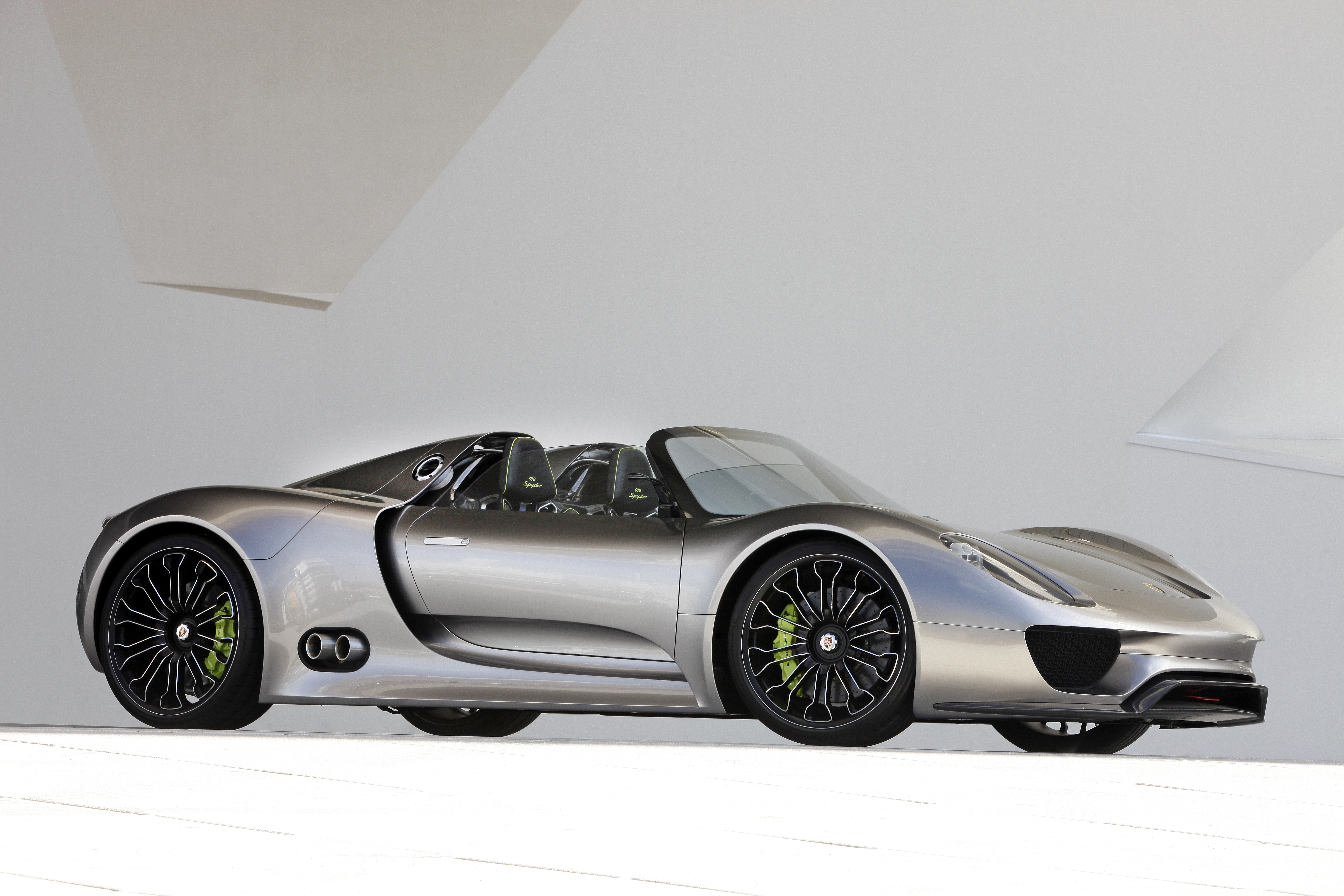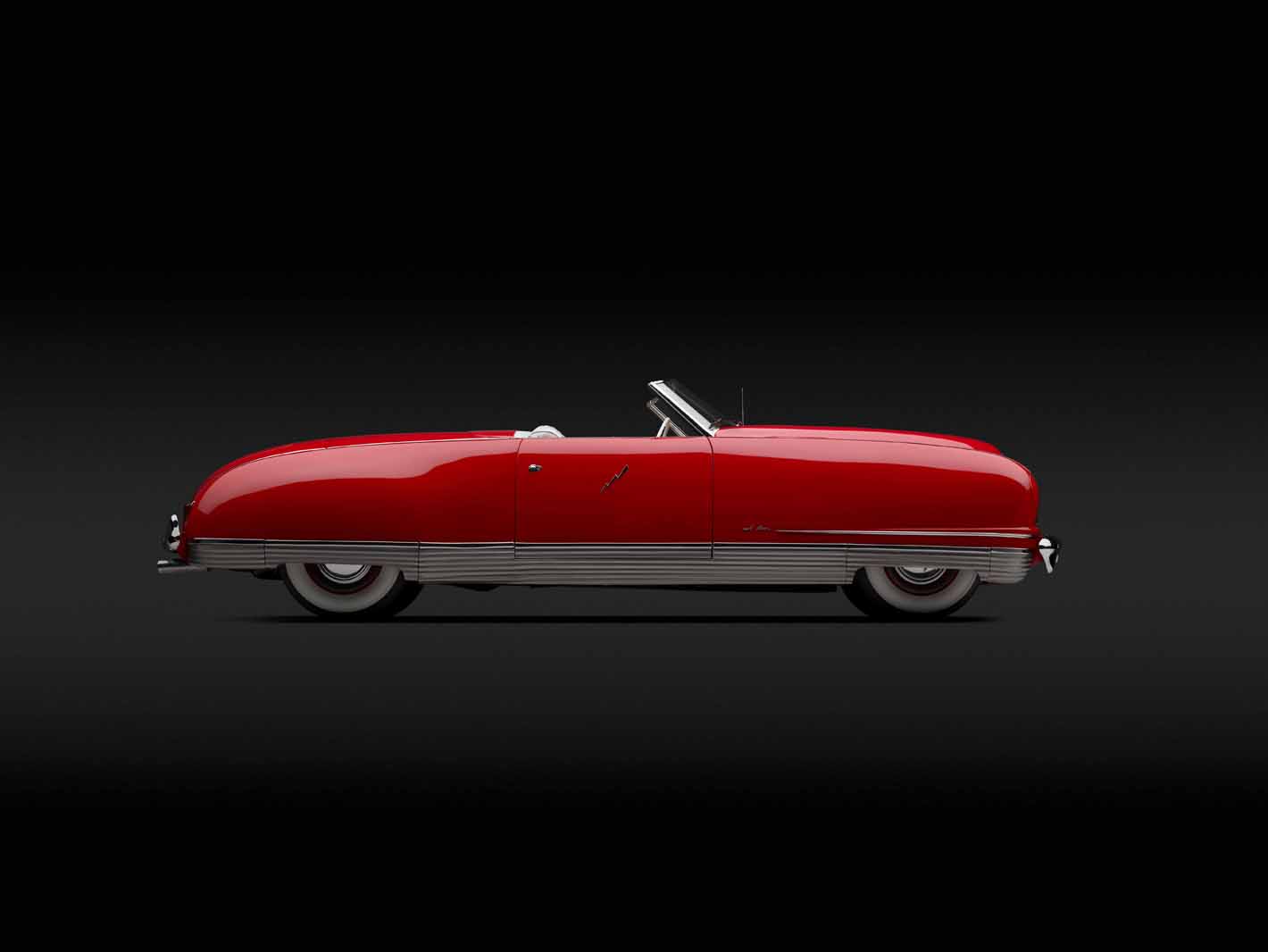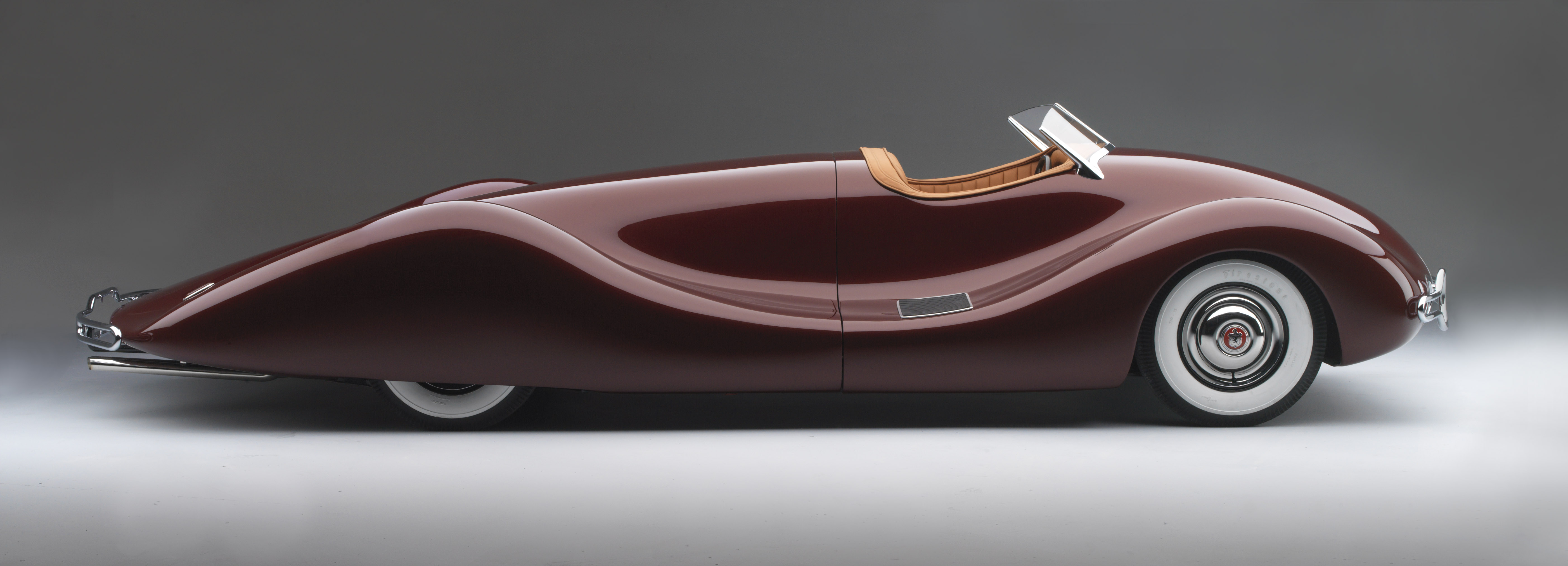IF YOU GOWhat: "Dream Cars: Innovative Design, Visionary Ideas."Where: High Museum of Art, 1280 Peachtree St. NE, Atlanta, through Sept. 7.Hours: 10 a.m.-5 p.m. Tuesday-Thursday and Saturday; 10 a.m.-9 p.m. Friday; noon-5 p.m. Sunday.Admission: $19.50 adult; $16.50 seniors and students; $12 ages 6-17.Information: high.org or 404-733-4444.
The first impression is one of a rolling, surging wave - if the wave is 18 feet long, weighs more than a ton and is candy-apple red with 14-karat gold flake sprinkled throughout.
The Norman Timbs Special, designed and built in 1947 by an automotive engineer, is almost freakishly beautiful, a swooping, graceful stretch of automobile that, even when sitting still, seems to be lunging forward. Timbs, who built it himself, took parts from various production cars - Ford, Packard - then added his own elements - no doors, an engine in the rear, a huge, hydraulically powered clamshell hood that cantilevered up from the center of the car. It's the first car you see when you enter "Dream Cars: Innovative Design, Visionary Ideas," the new exhibit at Atlanta's High Museum.
But it's just one of 18 one-of-a-kind cars from around the world, cars that were built but never put into widespread production. They were ideas on wheels, concepts that automakers cherry-picked for various elements to use on mainstream cars but that, as a whole, were too expensive, too impractical or just too weird or wild for public consumption.
Ultimately, though, they were all about one thing - letting creativity and imagination run free.
"You're around all these products of makers and thinkers who, all they thought about was the future and what was possible and what was the potential," says Sarah Schleuning, curator of decorative arts and design at the High and the person who spent three years tracking down these vehicles around the world, then convincing the owners to let them be shipped to Atlanta. "This is a set of people who thought, 'If you can dream it, make it'; it's a really important message.
"I hope that this show helps spawn another group of people - whether automotive or not - who are creative thinkers and can see that there don't have to be limits," she says.
The cars run from 1934's Voisin C-25 Aerodyne to Porsche's 918 Spyder from 2010. There are racy-looking roadsters from the '30s, gigantic Cadillacs and GM Le Sabres from the '50s, their zooming tailfins and exhaust-port back ends highlighting the era's fascination with jet technology. There are "wedge" cars from the '70s, when automakers were competing to see who could design the sleekest and lowest one - the 1970 Lancia Stratos HF Zero wins because it's only 33 inches tall; you essentially must lay down on your back to drive it.
"Each of these cars is extraordinary in its own way," the brainchild of an industry studio team, or perhaps even one man's individual dream," writes Michael E. Shapiro, director of the High, in the coffee table book about the exhibit. "Some were made out of a desire for personal use; others were designed out of competing studios' desire to best their rival."
Besides the sheer beauty of the cars - even the colors are elegant and stylish - what's striking is how many of them preface technology that's only just now showing up in production cars, yet the ideas are 60 and 70 years old. The L'Oeuf Electrique is an electric car built in 1942; the 1956 Buick Centurion XP-301 has a rear-facing camera for backing up; the 1948 Tasco sports removable T-tops, while the 1936 Stout Scarab is essentially the first minivan, with seats that spin around to face backwards and a table for "drinks and card playing," according to its ad campaign.
The dashboard on the 1941 Chrysler Thunderbolt is a work of art, all pure white and gleaming chrome; the 1959 Cadillac Cyclone XP-74 is a genuine land yacht, 16 feet long, with doors that slide back instead of open outwards and, to alert the driver to hazards in the road, radar - yes, radar - in two protruding cones on the front of the car (known as "Dagmars" in honor of the busty 1950s actress who went by the single name).
"These incredible showstoppers had ideas that are part of our everyday life now," Schleuning says. "I wanted people to realize how visionary they were and how long people have been thinking about those ideas."
Schleuning developed the idea for "Dream Cars" after the success of "The Allure of the Automobile," a 2010 exhibition at the High that focused on the art of automobile design through the years and how it fit into various artistic movements going on at the time. Thinking about another auto-oriented show, she asked herself: "What would we do if we did one again, and what would that look like?"
"I was really interested in these bigger ideas where the cars were sort of the lens to look at these ideas of how innovation and creativity happen," she says.
Tracking down the cars was very much a detective story; reading about them in books and magazines, discovering where they were now and, in some cases, if they even still existed. Some didn't. Some were found in bad shape and had
"I was really, really persistent," she says.
Yet sometimes, even when she found a car for which she was searching, she discovered that she couldn't use it in the show because of its size. The High's freight elevator, needed to carry the cars up to the exhibition's floor, can only accommodate certain dimensions, including a limit of 19 feet in length; some cars exceeded that.
Walking through the exhibit is moment after moment of "Oh, wow." Laughter is a common sound from visitors, the sound of coming across something so unusual or so cool, you simply must laugh with joy and surprise. Strangers strike up conversations with each other, pointing out nifty elements on the cars.
Two women, who don't know each other at all, are looking at the L'Oeuf Electrique ("Electric Egg"), a tiny three-wheeler designed by an engineer in Paris who, during the German occupation of World War II, needed a car that didn't use gasoline because it was so heavily rationed.
"This electric car was built in 1942," one of the women marvels, "why are we just now building them?"
"Oh, don't even get me started on that," the other woman says with a laugh. "That's a whole 'nother discussion."
For Schleuning, the Egg "is a car that's really resonated with the kind of idea that the show's all about." She and her team actually flew to Paris, where the car was sitting in an automotive museum, to secure it for the High show.
"This was a single maker; this is a car he made for himself for personal use," she says. "This is one person's vision that they felt they needed to make."
Contact Shawn Ryan at sryan@timesfreepress.com or 423-757-6327.

